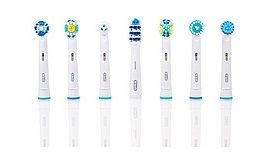Waging War on Mouthwash Stains: A Guide to Keeping Your Smile Sparkling
So, you’ve embraced the daily swirl of mouthwash, chasing away the remnants of that onion bagel and keeping your breath minty fresh. But lo and behold, instead of a sparkling grin, you’re greeted by a Technicolor smile in the mirror. Mouthwash stains on teeth? Bet you didn’t see that coming in your pursuit of oral hygiene excellence. Fear not, for we’re about to embark on a quest to banish those pesky stains and reclaim your pearly whites.
Understanding the Culprit: Why Mouthwash Stains
First things first, let’s crack the case on why some mouthwashes leave behind stains. The usual suspects are certain ingredients like chlorhexidine and cetylpyridinium chloride, found in mouthwashes designed for fighting plaque or treating gingivitis. They’re like that overzealous friend who means well but ends up spilling wine on your carpet. In their zeal to combat bacteria, they can bind to hard and soft tissues in the mouth, leaving behind unsightly stains.
The Battle Plan: Removing Mouthwash Stains
- Switch Your Mouthwash: If your mouthwash is the staining kind, consider switching to a different type. Look for alcohol-free versions or those that specifically claim not to stain. Your dentist can also recommend a stain-fighting rinse that’s kinder to your teeth.
- Upgrade Your Brushing Game: Brushing twice a day with a fluoride toothpaste can help remove surface stains. Electric toothbrushes are particularly good at this, offering a deeper clean than their manual counterparts. Think of them as your trusty steed in the battle for stain-free teeth.
- Baking Soda Magic: Baking soda has a mild abrasive quality that can help scrub away stains without being too harsh on your enamel. Mix a little with your toothpaste for an extra whitening boost, but don’t overdo it—once a week is plenty to avoid enamel wear.
- Professional Cleaning: Sometimes, you just need to call in the cavalry. A professional dental cleaning can remove surface stains more effectively than home remedies. Your dentist has tools and pastes that are not available over the counter, making this option the heavy artillery in your stain-fighting arsenal.
- Whitening Treatments: For stubborn stains, consider professional whitening treatments. These can be more effective than over-the-counter options and are tailored to your specific needs. It’s like having a custom suit made, but for your teeth.
Preventative Measures: Keeping Stains at Bay
- Rinse with Water: After using mouthwash, rinse your mouth with water. This can help dilute any stain-causing agents before they settle in for a long stay.
- Regular Dental Visits: Keeping up with your dental check-ups and cleanings is like having regular inspections for your car. It keeps everything running smoothly and prevents small issues from becoming big problems.
- Drink Water: Staying hydrated helps produce saliva, which is nature’s way of cleaning your mouth and teeth. Plus, it’s just a good life choice.
- Use a Straw: If you’re using a mouthwash that tends to stain and can’t switch, consider swishing it through a straw. It might look a bit odd, but it can minimize the liquid’s contact with your teeth.
The Final Brushstroke
Mouthwash stains on your teeth can be a surprising side effect of your oral hygiene routine, but they’re not a life sentence. With a bit of knowledge, some strategic changes, and possibly a visit to your dentist, you can remove those stains and prevent new ones from forming. Remember, the goal is a healthy, happy smile—not a colorful one. So, here’s to clear rinses and clearer smiles, without any unwanted rainbows!
